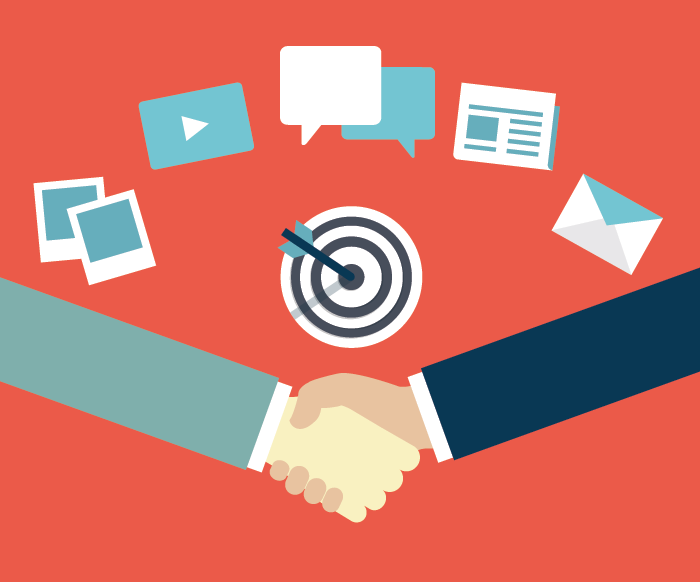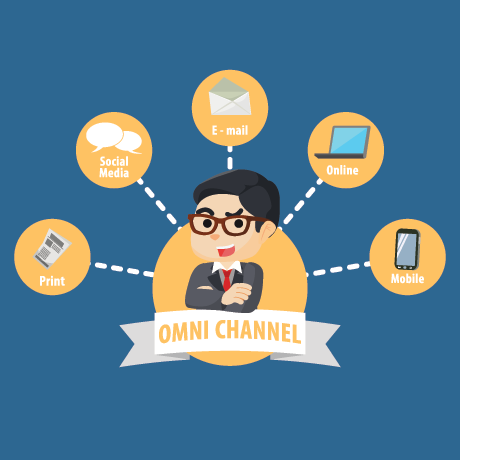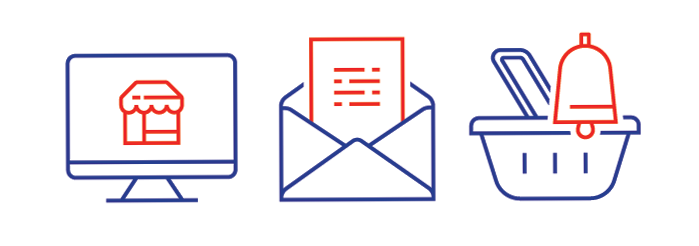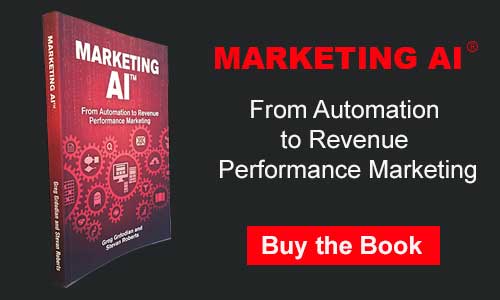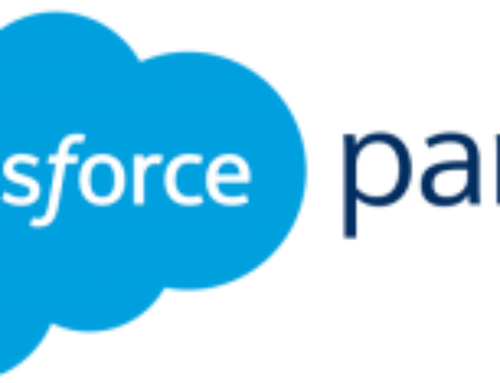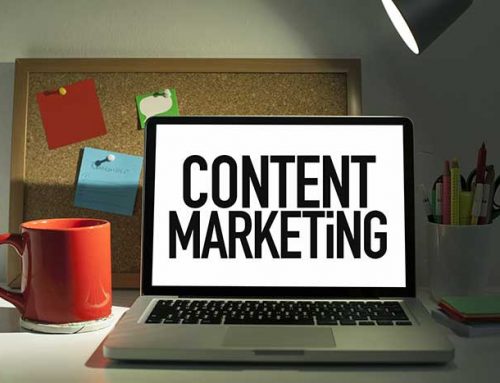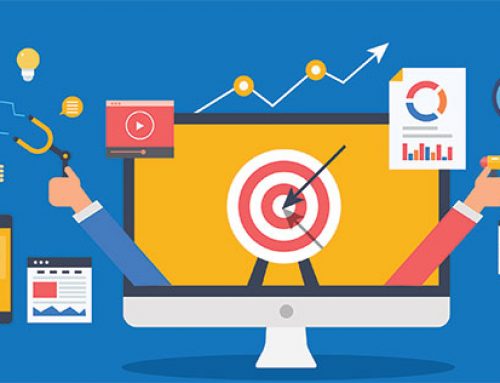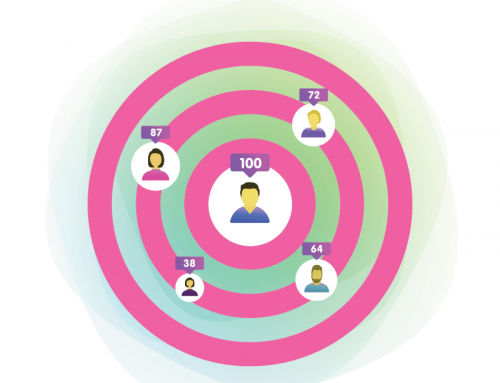This is part 2 of Chapter 6
We left off talking about list-based retargeting. Next, we’ll move on to re-engagement, trigger, and flow strategies.
Re-engagement Strategies
No matter how tempting your offer may be, your audience will respond to it in one of three ways: with enthusiasm, with uncertainty, or with a shrug. Promising leads range from interested to eager, and they’re prime candidates for retargeting with more details on an initial offer. Thanks to your MAS lead-scoring system, you’ll know which is which and understand precisely how to approach these leads with the appropriate content for their position within the Lead Lifecycle. Make it easy for them to act, and they’ll do the rest. For uncertain responses from leads that are still at the top of the sales funnel, more information could be the deciding factor that results in action. Even leads that have expressed little interest in a given offer can still be retargeted with a quick message to alert them that the offer is ending soon.
Email and direct mail are viable ways to retarget potential customers but don’t overlook telemarketing, an avenue of re-engaging that has a high success rate when implemented well. The key to making telemarketing work well is relevance. A high lead score indicates high relevance, so by calling only the leads that have the highest scores, you make the best use of your retargeting resources. If customers have already expressed some interest in talking more with you about an offer, then a call is often a deciding factor when making a coordinated, relevant marketing effort. Using a clean database and working with a marketing company that knows how to manage telemarketing campaigns is a must. We’ll discuss the new role of telemarketing in an AI-driven marketing strategy in a future blog.
By defining your re-engagement strategy prior to execution, your MARKETING AI® takes the guesswork out of the process when it’s crunch time. Establish your multitouch strategy during this stage using the built-in tools marketing automation software offers. Once you’ve deployed your initial email campaign and generated your pulse, a re-engagement blueprint helps you know how to monitor it and keep it strong, how to know which triggers create a cascade of additional events, and how to work toward positive outcomes. Ideal re-engagement efforts draw on what you learned from the initial campaign and retain a common thread in the creative, content, and tone, and typically kick up the urgency and utilize additional distribution channels. Following are five re-engagement strategies that excel:
- Direct mail – Send a tailored direct mail piece that is delivered only to those who opened the email but didn’t convert. This is a much more qualified audience worthy of the higher expenses associated with direct mail.
- Banner advertising – Reinforce your message to everyone who opened the initial email as they move on with their day and venture online is a strong tactic that keeps your brand in front of mind and can lead to a returned visitor and eventual conversion.
- Telemarketing – Often overlooked, telemarketing offers great one-to-one interaction that can provide just the necessary nudge to convert that warm prospect into your next customer. A strong retargeting campaign via telemarketing also lets your marketing team gather some critical intel as to how your target audience perceives your product or service.
- Landing page – Yes, you can use your site to retarget an email recipient. When customers have clicked on your email link, you can cookie their browsers and retarget them specifically as they visit other sites in your efforts to win them back and convert them.
- Triggered email – This is an especially effective method that deserves more explanation, and you’ll learn more about it in a later blog, as well as in this chapter.
Triggers and Flows
Industry analysts have noticed tectonic shifts in successful email marketing efforts. While other aspects of email enhance open rates, including subject lines, subheaders, and “from” lines, one of the biggest factors in improving opens and click-to-open ratios is whether the email was triggered. Triggered messages aren’t sent at random; they go out in response to some action from the intended recipient. For example, your marketing team might have automated welcome messages lined up to send to customers who subscribe to an online magazine, or thank-you messages to those who’ve just made a purchase. Time triggers could go out on birthdays, company founding dates, or “win backs” after a certain period of inactivity to encourage prospects to return.
How much of a difference does triggered email make? According to current benchmarks, triggered messaging has a 75 percent higher open rate and a 115 percent higher click rate over conventional campaigns.
With a large email campaign, those numbers could translate into staggering increases in conversion rates. Despite that major incentive, most marketing companies haven’t yet capitalized on triggered email messaging. By achieving greater relevance and specificity, triggered email creates a level of engagement that few other channels can match. Think about what you know of the importance of behavioral data in providing context, and you start to see the tremendous power of triggered email as part of a logical flow through the marketing pipeline. Journalists consider who, what, when, where, why, and how when reporting a story. You already know how important it is to establish who you are, who your customers are, and what you say to one another. The logistics — the how and where of data discovery and analytics — are already in place with marketing automation. At the beginning of this chapter, we talked about the importance of when. Triggered emails set up in your MAS are a big part of maintaining the tempo of your campaign, organizing the timing for you. It’s the ideal tool for managing time[1]sensitive elements of your campaign — and it’s almost all time-sensitive, so that’s a tall order.
Flow charts establish a sequence for carrying out a process or making a decision and marketing automation flows serve a similar purpose. They trace trajectories of leads through your pipeline and recalculate the best possible path with each decision your prospects take. As with flow charts, some paths are longer than others. If a prospect comes to you already asking about prices and delivery dates, your MARKETING AI® spots these signals and identifies this potential customer as a highly motivated lead, alerting sales right away to get this buyer in as a SAL or SQL (sales-accepted or sales-qualified lead). Other routes are circuitous, going through a lengthy nurturing process across multiple channels. Especially in B2B, where individual buyers are rarely the sole decision-makers and need volumes of information before making a choice, establishing a good flow is essential to lead nurturing.
Flows are something you and your marketing automation specialists build, but the movement through them is controlled by customer actions. They aren’t prescriptive; you aren’t giving orders to your leads out of context, but you are suggesting courses of action to them based on behavioral cues. Paying attention to these triggers and refining flows by modifying them according to the data your MARKETING AI® collects is as much of a benefit to your buyers as it is to you. They get what they need when they need it, and you get a fully realized revenue-marketing upgrade.
Tips and Tricks for Triggers
A single email message can be powerful, but additional messages that go out in response to actions your prospect takes are even more effective for eliciting a response. You may send triggered emails to remind a prospective customer about items left in a shopping cart and never checked out or to make contact again after a set length of time without getting in touch. To make the most of triggered email, keep the following guidelines in mind, and tailor your triggers to events that are relevant to your clientele.
Personalize — Personalized emails always have more of an impact than generic messages, and that’s true for triggered email, too. Birthday coupons are a common example of personalizing triggered messages, especially in B2C contexts, but they’re far from your only option. Changes to a prospect’s status on preference pages can be useful triggers too. Someone who changes “Miss” to “Mrs.” or updates an address with a new ZIP code presents a new opportunity for triggered email. For B2B industries, changes to job title or updates to the personal information linked to a pre-existing job title represent opportunity; not only do you maintain your contact with the individual who used to sit at a particular desk, but you also get a chance to reach out to the person who sits there now.
Whenever data changes, your MAS can respond to it with a triggered message.
Create a Connection — Whenever possible, tie the triggered mail both to the event that triggered it and to a customer’s current needs.
For example, SEO Schematics offers a webinar. The flow action starts with an emailed invitation. Those that sign up are immediately sent a 
Use Multiple Data Sources — Data enhancement is critical to maximizing the utility of triggered emails. With a more complete customer profile, you’re able to choose from a wider range of possible triggers and find which ones bring the highest response rates. If all you know is your recipient’s place of business, you have relatively few options; add in key characteristics such as job title, buying authority, company size, and role, and you have a wealth of additional options for reaching that customer with triggered email. The more you know, the more potential trigger points your marketing AI can identify and act on, dramatically increasing response rates.
Be Patient — The point of triggered automated email is that you don’t have to micromanage it. Once you’ve set up your triggers, you can focus on other aspects of your integrated marketing strategy while the system does the work. That means you can set triggers for weeks or even months away, allowing you to reintroduce yourself to recipients on a larger timescale. If you were to rely on manual email blasts, some of your best leads could be lost; with automated email triggers, that isn’t an issue. You can afford to be patient.
Direct Your Prospects — Triggered email still needs a strong call to action and a direct purpose. Making the reason for your email clear and putting your call to action (CTA) above the fold is even more important with triggered messages because it’s a reaction, not just a connection. An introductory email or sales message has a little more room to expand; a triggered email should be brief, concise, and tightly focused on the event that made it happen.
Nurturing Strategies with Triggered Email
To get a clearer idea of how flows work and what they mean to a marketing campaign, let’s look at how SEO Schematics has its email flow coordinated. This is a simplified version of flows that looks only at email marketing and only at the uppermost level of flow construction.
MARKETING AI® systems are powerful and allow for more nuanced, sophisticated flows, but as each system is different, it’s useful to look at a simplified model that’s representative of the concept.
Introductions — Welcome Series
Whenever a prospective customer visits the SEO Schematics site, asks for information, or downloads content for the first time, that lead enters the welcome flow. In its first email, marketing automation team members give prospects a brief overview of who the company is and what it can do for them. Using its new marketing automation tools, the company has great data to use for personalization. Writing slightly different content for people who enter the welcome series of emails through different paths can go a long way toward making readers feel valued.
Possible triggers for welcome emails could include visiting your site, subscribing to your newsletter, and joining your forum or blog community. Typically, you’ll set up the first autoresponder welcome email immediately after getting your prospect’s email address. It’s often a good practice to include a registration link in this initial email to ensure you have the right address.
“Is There Anything Else?” – Request Series
Visits to a pricing page, downloads, and emailed questions should divert the flow of triggered emails from welcoming readers to serving their needs as prospective customers. They’re much farther along the sales pipeline than new visitors to the site, so the triggered email should likewise be more in-depth. These prospects already have a pretty good idea of what the company is and what it does; they just need some key details filled in to make their buying decision simpler. Content at this stage should ease that phase change from guest to promising prospect.
Because potential customers tend to spend more time in the fact-finding phase of their relationship than in other phases, you may have multiple triggers at this point (as SEO Schematic did). You want different email going out to the people who are moving rapidly through your sales pipeline than the message going out to people who have slowed or stopped their progress. For example, you might have one flow for people who have requested a quote, another for those who have downloaded an industry-related report, and yet another for those who abandoned their shopping cart or wish list.
Fill ‘Em Up – Replacement Series
This series of triggered emails go out to customers and help with retention rather than acquisition. Because SEO Schematics needs to update software for its customers regularly to keep on top of search engines’ algorithm changes, the company has set email triggers to remind buyers of that. Anything customers come back to buy merits its own email cascade that triggers automatically when clients purchase these items or upgrades. Calibrating the timing on these letters is essential; when they’re timed well, recipients consider them a courtesy, but if they come too soon or too late, they’re ignored. Sales records tell the company most of what it needs to know to time these messages just right.
Welcome Back – Reactivation Series
SEO Schematics values every customer. When one of its longtime clients disappears, they want a way to reestablish contact. With data appending, they’re able to track more of their former clients, so now they want to set up a reactivation flow to make it easy for these former clients to re-enter the sales pipeline.
Even your best customers sometimes go dormant without any reason you can see. A triggered email can sometimes be enough to remind them they’d like to see more of you too. You can set this series to trigger as a contingency plan that most customers won’t ever see unless they go dormant for a while. Depending on your customers’ usual time from the first contact to sale, you might set this cascade in motion after anything from a few weeks to a few months.
We’ve talked about the when of establishing contact with your customers. In the next blog in our MA Series – Chapter 7 Content, you’ll gain an in-depth perspective on what you want to say once you have their attention through a compelling initial communication and ongoing nurture campaign. We’ll start with one of the hottest topics in digital marketing today — content marketing.
© Reach Marketing, LLC
Next Blog: MA Series – Chapter 7: CONTENT
A MARKETING AI® Mindmap
In this series Marketing AI®: From Automation to Revenue Performance Marketing, you’ll learn much more about what marketing automation is, what it isn’t, and where it fits into a marketing strategy. You’ll also discover more about traditional marketing through the lens of automation and read a compelling case study about how one company went from finding itself in a marketing dead zone to flourishing as an automated, intelligent, and responsive organization that converted its old marketing plan into a revenue marketing strategy.
Sign Up To Receive Future Enewsletters
Copyright 2021 Reach Marketing LLC
MARKETING AI® is a registered trademark of Reach Marketing, LLC

